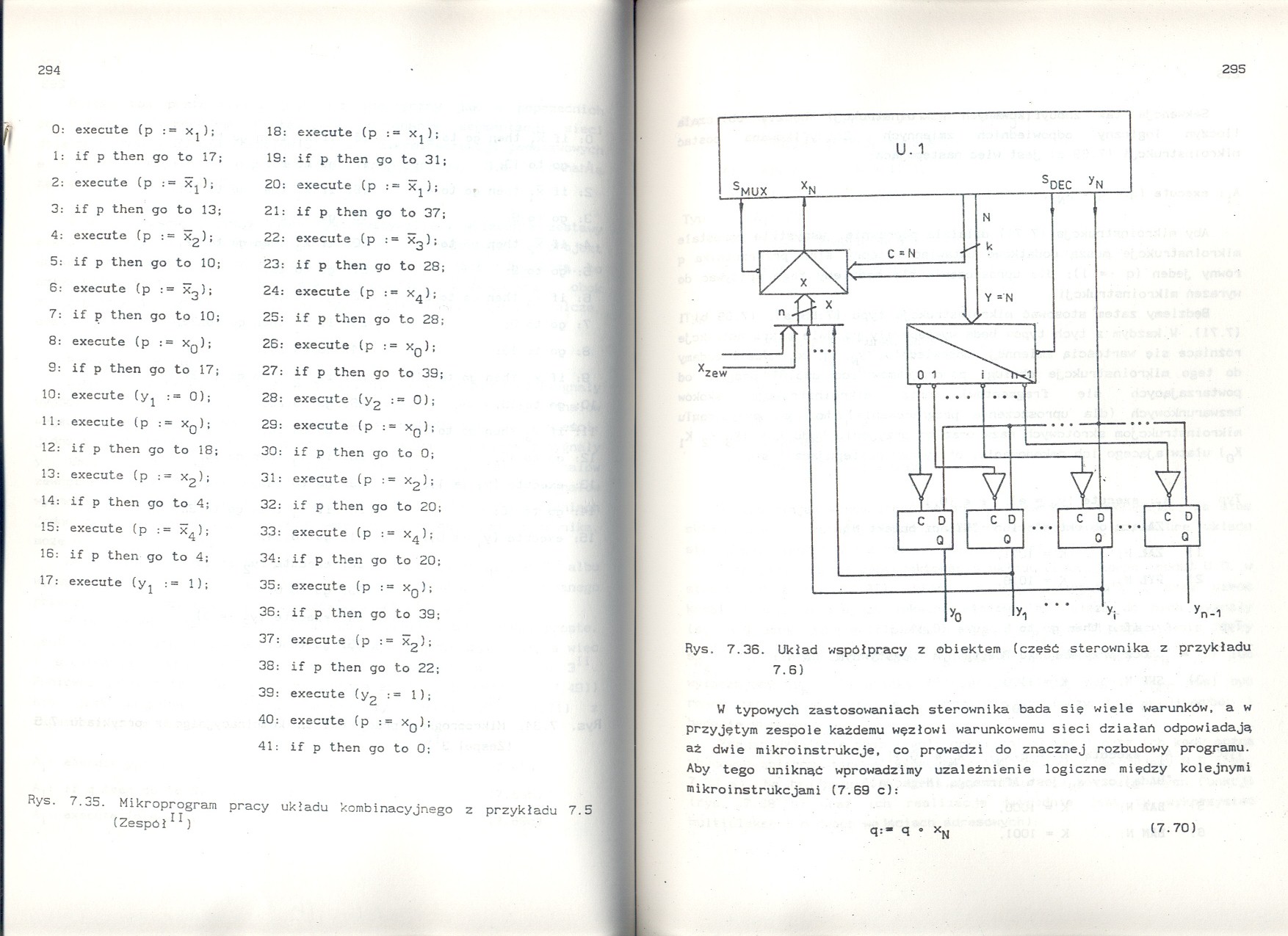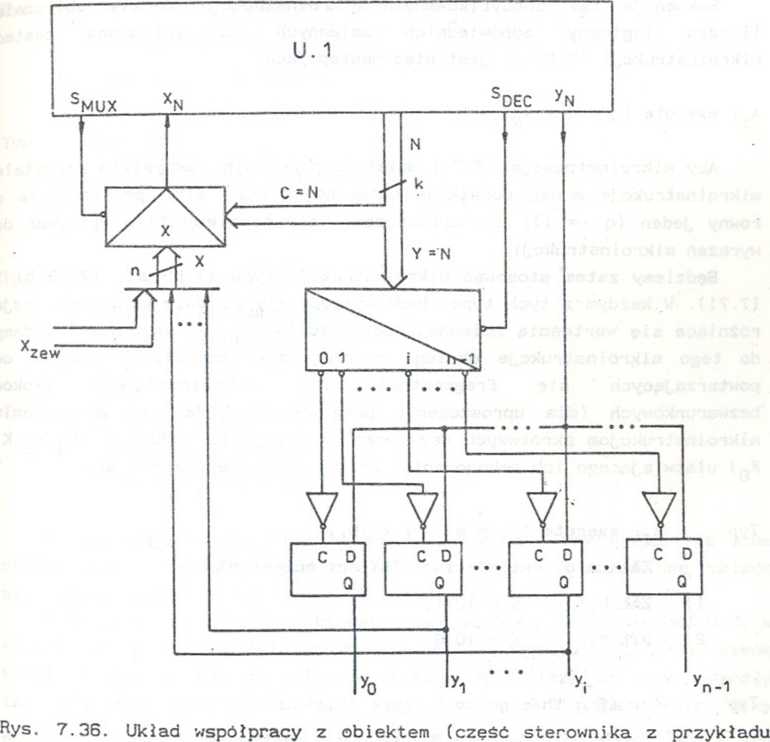150 4

294
|
0: |
execute (p := Xj); |
18: |
execute (p := Xj ); |
|
1: |
if p then go to 17; |
19: |
if p then go to 31; |
|
2: |
execute (p := x^ł; |
20: |
execute (p := x^); |
|
3: |
if p then go to 13; |
21: |
if p then go to 37; |
|
4: |
execute (p := Xg); |
22: |
execute (p := Xg): |
|
5: |
if p then go to 10; |
23: |
if p then go to 28; |
|
6: |
execute (p := Xg}; |
24: |
execute (p := X^); |
|
7: |
if p then go to 10; |
25: |
if p then go to 28; |
|
8: |
execute (p := Xg); |
26: |
execute (p := Xg); |
|
9: |
if p then go to 17; |
27: |
if p then go to 39; |
|
10: |
execute (y1 := 0); |
28: |
execute (yg := 0); |
|
11: |
execute (p := Xg); |
29: |
execute (p := xq^: |
|
12: |
if p then go to 18; |
30: |
if p then go to 0; |
|
13: |
execute (p := X2>; |
31: |
execute (p := X2); |
|
14: |
if p then go to 4; |
32: |
if p then go to 20; |
|
15: |
execute (p : = x^,); |
33: |
execute (p := x^); |
|
16: |
if p then go to 4; |
34: |
if p then go to 20; |
|
17: |
execute (y^ := 1); |
35: |
execute (p := Xg); |
|
36: |
if p then go to 39; | ||
|
37: |
ezecute (p : = ><2): | ||
|
38: |
if p then go to 22; | ||
|
39: |
execute (yg := 1); | ||
|
40: |
execute (p := Xg); | ||
|
41: |
if p then go to 0: | ||
|
Rys. |
7.35. Mikroprogram (Zespół* *) |
pracy |
układu kombinacyjnego |
przykładu

7.6)
W typowych zastosowaniach sterownika bada się wiele warunków, a w Przyjętym zespole każdemu węzłowi warunkowemu sieci działali odpowiadają aż dwie mikroinstrukcje, co prowadzi do znacznej rozbudowy programu. Aby tego uniknąć wprowadzimy uzależnienie logiczne między kolejnymi mikroinstrukcjami (7.69 c):
q=* q • xn (7.70)
Wyszukiwarka
Podobne podstrony:
m02 r5 i4 f/(x) = xJ^if/(x) = 0<=>x=0/x=-2 3j2 xą
08vcl03 C++ program If [relation is true]{ Executes only if relation is true Body of one or ◄- morę
homeOuickTime WMA 6.4 [20:18] <s
20 (18) ■ ’ -V V^K K k ( tv’a pił if HC* rtt, <,
test6 Xj !evf Z&fa 2 2 f kĄi^ TO^fU^L uf^&tt/A>5
DSC03539 (2) >/rnplcirr_fctc4<>fj4 ehcr&fc xJ* Udu frx«»rrf-* duszność to sut>jęl t/
20081005(150) Hormony larmry I* Z fmrzolu do krwi donloj^ «if T-3 i T—I I* Ol6oayoi hormonem kcsl r*
license?tails This software is not licensed xJ Serial number: Licensed to: Company:WMDBJCLHJLEY
49574 Str358 358 18.7.3. CIŚNIENIOMIERZE 358 ■ if ° 06 M20x7, t N- —H—
com4 xj Enter binary string to search for 29 C9 83 E9 ASCII UNICODE HEX +04 W Entire błock r~ C
więcej podobnych podstron